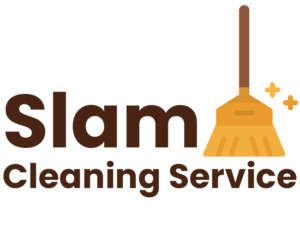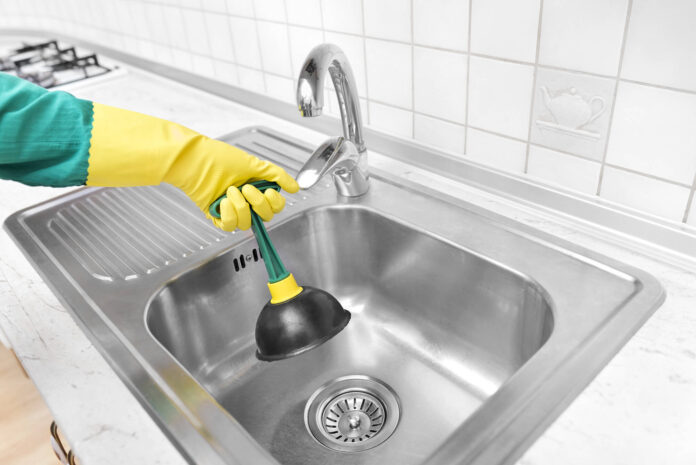Clogged drains are one of the most common household plumbing problems. Whether it’s the kitchen sink, bathroom drain, or shower, blockages can lead to slow drainage or complete stoppage, causing inconvenience and frustration. In Bedford, OH, homeowners often face this issue due to the region’s climate and typical plumbing systems. Fortunately, most clogged drains can be unclogged without the assistance of a professional if you have the proper equipment and a little know-how. This guide explains How to Clear a Clogged Drain using easy techniques.
Step 1: Assess The Situation
Before diving into the work, it’s essential to assess the severity of the clog. Is the water draining slowly, or is it completely backed up? A slow drain may just need a quick fix, while a completely blocked drain might require more attention. It’s also a good idea to determine whether the clog is localized to one fixture or if multiple drains are affected. If multiple drains are clogged, the issue may be deeper in the plumbing system, such as a main sewer line problem, and might require professional intervention.
Step 2: Gather Your Tools
To begin, gather the necessary tools to help with the unclogging process. For most minor clogs, you won’t need anything too specialized, just basic household tools. Here’s what you’ll need:
- A plunger
- vinegar and baking soda (or store-bought drain cleaning)
- A drain snake (if you have one)
- Rubber gloves (optional but useful)
- A bucket or bowl to catch water (if needed)
Having these tools on hand will allow you to approach the clog from multiple angles and increase your chances of success.
Step 3: Try The Plunger
The plunger is your first line of defense against a clogged drain. Whether it’s a kitchen sink, bathtub, or toilet, a plunger can often do the trick when used correctly. Make sure the opening is fully covered before starting by inserting the plunger over the drain. Make sure there is water in the sink or tub so that the plunger can form a seal for optimal results.
Firmly push down and pull up several times in a steady rhythm. The pressure should help dislodge the blockage. After several plunges, check to see if the water begins to drain. If it does, the clog may have been cleared. If not, move on to the next step.
Step 4: Use Baking Soda And Vinegar
Cleaning a clogged drain with vinegar and baking soda is simple and natural. Together, these everyday household objects dissolve soap scum, grease, and other material that can be the source of the problem.
To start, pour about half a cup of baking soda directly into the drain. You’ll likely hear fizzing as the mixture works to break down the obstruction. Let the solution sit for about 30 minutes, allowing it to penetrate the clog. After the wait, flush the drain with hot water to see if the clog has cleared.
If you prefer not to use chemicals, this method is a great alternative. It’s also eco-friendly, making it a good choice for homeowners in Bedford, OH, who are environmentally conscious.
Step 5: Use A Drain Snake
If the clog persists after trying the plunger and baking soda mixture, it may be time to break out a drain snake. A drain snake is a long, pliable instrument used to manually remove clogs from drains by reaching deeper into them. You can purchase a simple hand-crank drain snake at most hardware stores or rent a larger one if needed.
To use the drain snake, insert the end of the tool into the drain and slowly turn the handle to push it deeper into the pipe. You may feel resistance as the snake encounters the blockage. Keep turning the handle until the snake breaks through the clog. Pull the snake carefully out of the drain when the impediment has been removed. Afterward, run hot water to flush any remaining debris down the pipe.
Step 6: Consider A Store-Bought Drain Cleaner
If none of the above steps have worked, you may consider using a store-bought drain cleaner. These chemicals are designed to dissolve stubborn clogs and are often effective when natural methods fail. Because some cleaners can be caustic, be sure to wear gloves and carefully follow the manufacturer’s instructions.
While these cleaners can be effective, it’s important to note that overuse can damage your pipes, especially in older homes. If the clog is still present after using a drain cleaner, it may be time to call in a professional plumber to assess the situation.
Step 7: Prevent Future Clogs
Once your drain is clear, consider taking steps to prevent future clogs. Install drain covers to catch hair, soap, and food particles. In the kitchen, be mindful of grease and food scraps that can easily accumulate in the drain. To keep your drains clear and less clogged, flush them with hot water on a regular basis. Performing these maintenance steps can save you time, money, and hassle in the long run.
When To Call A Professional?
If you’ve tried all these steps and the drain is still clogged, or if you notice recurring problems with your plumbing, it’s time to call a professional plumber in Bedford, OH. Persistent clogs may indicate a larger issue, such as a problem with your sewer line or a deep obstruction in the pipes that requires specialized equipment to clear.
Conclusion
Clogged drains in Bedford, OH, are a common nuisance, but with the right tools and techniques, you can often clear them yourself. Start with basic methods like plunging and using baking soda and vinegar, and move to more advanced solutions like a drain snake or chemical cleaner if necessary. Regular drain maintenance can help keep your plumbing in good working condition, reducing the chances of future clogs. However, don’t hesitate to call a professional plumber if the problem persists.




